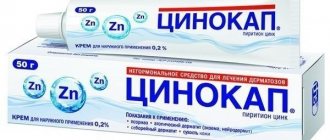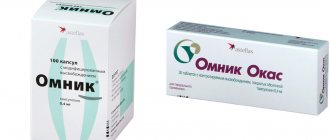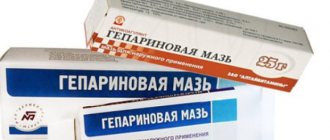Analogues of the drug according to ATC codes:
GELARIUM HYPERICUM DEPRIM DOPPELHERTZ NERVOTONIK St. John's wort LIFE 600 MEDOMEXI MEXIDANT MEXIDOL MEXIDOL MEXIPRIM MEXIPRIM MEXIPRIM MEXIPRIM MEMORY METOSTABIL NEGRUSTIN NEUROX PLACENTA COMPOSITE TRIGAMMA CEREBRONORMS CYTOFLAVIN ETHYLMETHYL HYDROXYPYRIDINE SUCCINATE All
pharmachologic effect
Antioxidant drug. It has antihypoxic, membrane protective, nootropic, anticonvulsant and anxiolytic effects. The drug increases the body's resistance to the effects of various damaging factors, to oxygen-dependent pathological conditions (shock, hypoxia and ischemia, cerebrovascular accidents, intoxication with alcohol and antipsychotics /neuroleptics/).
Mexidol® improves cerebral metabolism and blood supply to the brain, improves microcirculation and rheological properties of blood, and reduces platelet aggregation. Stabilizes the membrane structures of blood cells (erythrocytes and platelets) during hemolysis. It has a lipid-lowering effect, reduces the content of total cholesterol and low-density lipoproteins.
Reduces enzymatic toxemia and endogenous intoxication in acute pancreatitis.
The mechanism of action of Mexidol is due to its antihypoxic, antioxidant and membrane protective effects. The drug inhibits the processes of lipid peroxidation, increases the activity of superoxide oxidase, increases the lipid-protein ratio, reduces the viscosity of the membrane, and increases its fluidity. Mexidol® modulates the activity of membrane-bound enzymes (calcium-independent phosphodiesterase, adenylate cyclase, acetylcholinesterase), receptor complexes (benzodiazepine, GABA, acetylcholine), which enhances their ability to bind to ligands, helps preserve the structural and functional organization of biomembranes, transport of neurotransmitters and improve synaptic transmission. Mexidol® increases the content of dopamine in the brain. Causes an increase in compensatory activation of aerobic glycolysis and a decrease in the degree of inhibition of oxidative processes in the Krebs cycle under hypoxic conditions with an increase in the content of ATP and creatine phosphate, activation of the energy-synthesizing functions of mitochondria, stabilization of cell membranes.
Special instructions for use
It should be taken into account that the active component of the drug can enhance the effect of antiparkinsonian (levodopa), anticonvulsant (carbamazepine) drugs.
During medication therapy, it is not recommended to perform work that requires a quick psychomotor reaction and concentration, as drowsiness may occur as a side effect.
The safety of using the drug for the treatment of children, during pregnancy, during the lactation period has not been proven, so its use is not recommended, but it is possible if the doctor considers that the likely benefit outweighs the risk of unwanted symptoms.
Pharmacokinetics
Suction
When Mexidol is administered in doses of 400-500 mg, Cmax in plasma is 3.5-4.0 mcg/ml and is achieved within 0.45-0.5 hours.
Distribution
After intramuscular administration, the drug is determined in the blood plasma within 4 hours. The average retention time of the drug in the body is 0.7-1.3 hours.
Removal
It is excreted from the body in the urine mainly in glucurone-conjugated form and in small quantities unchanged.
Release form
The drug Mexidol has the following forms of release:
- Solution. It is administered intravenously (IV) and intramuscularly (IM), and the drug is produced in ampoules of 2 and 5 ml. Active ingredient (ethylmethylhydroxypyridine succinate) in 1 ml of solution 50 mg;
- Pills. They are produced in a round shape and are predominantly white. One tablet contains 125 mg of the main component.
The form usually does not affect what the drug helps with. It is selected based on the individual characteristics of the patient, but they often switch from injections to tablets when the desired effect is achieved.
MEXIDOL: DOSAGE
Mexidol® is administered intramuscularly or intravenously (stream or drip). To prepare a solution for infusion, the drug should be diluted with isotonic sodium chloride solution.
Mexidol® is injected slowly over 5-7 minutes, dropwise at a rate of 40-60 drops/min. The maximum daily dose is 1200 mg.
In case of acute cerebrovascular accidents, Mexidol® is used in complex therapy in the first 10-14 days intravenously at a dose of 200-500 mg 2-4 times a day, then intramuscularly at a dose of 200-250 mg 2-3 times a day. within 2 weeks.
For traumatic brain injury and the consequences of traumatic brain injury, Mexidol® is used for 10-15 days intravenously at a dose of 200-500 mg 2-4 times a day.
For discirculatory encephalopathy in the decompensation phase, Mexidol® is used intravenously in a stream or drip at a dose of 200-500 mg 1-2 times a day for 14 days, then intramuscularly at 100-250 mg/day for the next 2 weeks.
For a course of prophylaxis of dyscirculatory encephalopathy, Mexidol® is prescribed IM at a dose of 200-250 mg 2 times a day for 10-14 days.
For mild cognitive impairment in elderly patients and anxiety disorders, Mexidol® is prescribed IM at a dose of 100-300 mg/day for 14-30 days.
For alcohol withdrawal syndrome, Mexidol® is administered in a dose of 200-500 mg intravenously or intramuscularly 2-3 times a day for 5-7 days.
In case of acute intoxication with antipsychotic drugs, Mexidol® is administered intravenously at a dose of 200-500 mg/day for 7-14 days.
In acute purulent-inflammatory processes of the abdominal cavity (acute necrotizing pancreatitis, peritonitis), Mexidol® is prescribed on the first day both in the preoperative and postoperative periods. The dose of the drug depends on the form and severity of the disease, the prevalence of the process, and variants of the clinical course. Discontinuation of the drug should be done gradually, only after a stable positive clinical and laboratory effect.
For acute edematous (interstitial) pancreatitis, Mexidol® is prescribed 200-500 mg 3 times a day intravenously (in isotonic sodium chloride solution) and intramuscularly.
For necrotizing pancreatitis of mild severity, Mexidol® is prescribed 100-200 mg 3 times a day intravenously (in isotonic sodium chloride solution) and intramuscularly.
For necrotizing pancreatitis of moderate severity - 200 mg 3 times a day intravenously (in isotonic sodium chloride solution).
For severe necrotizing pancreatitis - at a dose of 800 mg on the first day, with a double dose regimen, then - 200-500 mg 2 times a day with a gradual reduction in the daily dose.
In extremely severe forms of necrotizing pancreatitis, the initial dose is 800 mg/day until the manifestations of pancreatogenic shock are persistently relieved; when the condition is stabilized, 300-500 mg 2 times/day intravenously (in isotonic sodium chloride solution) with a gradual reduction in the daily dose.
In tablets
This is the most affordable form of release for a sick person: it is possible to buy tablets without a prescription at any pharmacy. The use of Mexidol should be based on the recommendations of a specialist and study of the instructions. If you use the medicine correctly, you can protect the body from intoxication and prevent the appearance of foci of necrosis against the background of spontaneously progressive oxygen starvation. Mexidol (tablets) is prescribed for such conditions of the body as:
- systemic circulatory disorder;
- previous strokes;
- general intoxication of the body;
- TBI;
- encephalopathy;
- long-term stressful conditions;
- extensive nerve damage;
- infectious and inflammatory processes of the body.
Mexidol's instructions tell you how to properly use this medicine in practice. The initial dose of the drug is defined as 1-2 tablets twice a day, but then, on the recommendation of a doctor, it can be increased to 1-2 tablets three times a day. The maximum portion of ethylmethylhydroxypyridine per day is 800 mg, i.e. 6 tablets. Exceeding the daily norms, according to the instructions for use, can lead to an overdose. The duration of therapy varies from 2 to 6 weeks, and must be discussed with the attending physician.
- How to cook broccoli
- How to enlarge breasts at home for a girl
- Homemade bread in the oven - step-by-step recipes with photos. How to bake a delicious loaf at home
Indications
- acute cerebrovascular accidents;
- traumatic brain injury,
- consequences of traumatic brain injuries;
- encephalopathy;
- vegetative-vascular dystonia;
- mild cognitive disorders of atherosclerotic origin;
- anxiety disorders in neurotic and neurosis-like conditions;
- relief of withdrawal syndrome in alcoholism with a predominance of neurosis-like and vegetative-vascular disorders;
- acute intoxication with antipsychotic drugs;
- acute purulent-inflammatory processes of the abdominal cavity (acute necrotizing pancreatitis,
- peritonitis) as part of complex therapy.
Analogues of the drug
The use of a medicinal solution intended for parenteral administration is indicated to eliminate pathological conditions of various organs and their systems:
- Inflammatory processes of a purulent nature, localized in the abdominal cavity and accompanied by lesions of the peritoneum (the connective tissue membrane lining the walls and organs of the abdominal cavity), as well as acute inflammatory processes in the pancreas.
- Complex treatment of open-angle glaucoma, characterized by increased intraocular pressure and insufficient nutrition of the neurocytes of the retina (dystrophic changes in the retina).
- Myocardial infarction (a pathology in which a section of the heart muscle dies due to acute disturbances in its nutrition). In this case, Mexidol is used as an element of complex therapy from the first for treatment.
- Atherosclerotic lesions of blood vessels located in the brain, accompanied by the formation of cholesterol plaques in them, impaired blood flow, nutrition of cellular structures of the brain, and cognitive impairment.
- Withdrawal syndrome in drug and alcohol addiction. In this case, it is used as an element of complex influence.
- Neurosis-like conditions accompanied by neurotic disorders, feelings of fear and anxiety.
- Vegetative dystonia. It is a pathology of the autonomic nervous system, accompanied by disturbances in the innervation of the arteries with fluctuations in the level of systemic blood pressure.
- Encephalopathy. It is a pathological condition associated with disturbances in the functional activity of the blood vessels that nourish the brain tissue of the head.
- Suffered TBI, complex therapy of its consequences.
- Acute forms of circulatory disorders in the brain, accompanied by a sudden decrease in the supply of nutrients and oxygen to neurocytes.
In addition, Mexidol can be used to eliminate the symptoms of intoxication with antipsychotic medications.
The most popular analogues of Mexidol in terms of therapeutic effects and composition are: Mexiprim, Mexipridol, Astrox. "Mexico", "Armadin", "Medomexy".
It is worth considering that all of these drugs have certain contraindications and may cause the development of negative symptoms. Replacement of the drug should be carried out strictly after agreement with a specialist.
It is important to remember that therapy with this drug should be carried out exclusively on the recommendation of a doctor.
We looked at how to administer Mexidol injections intramuscularly.









